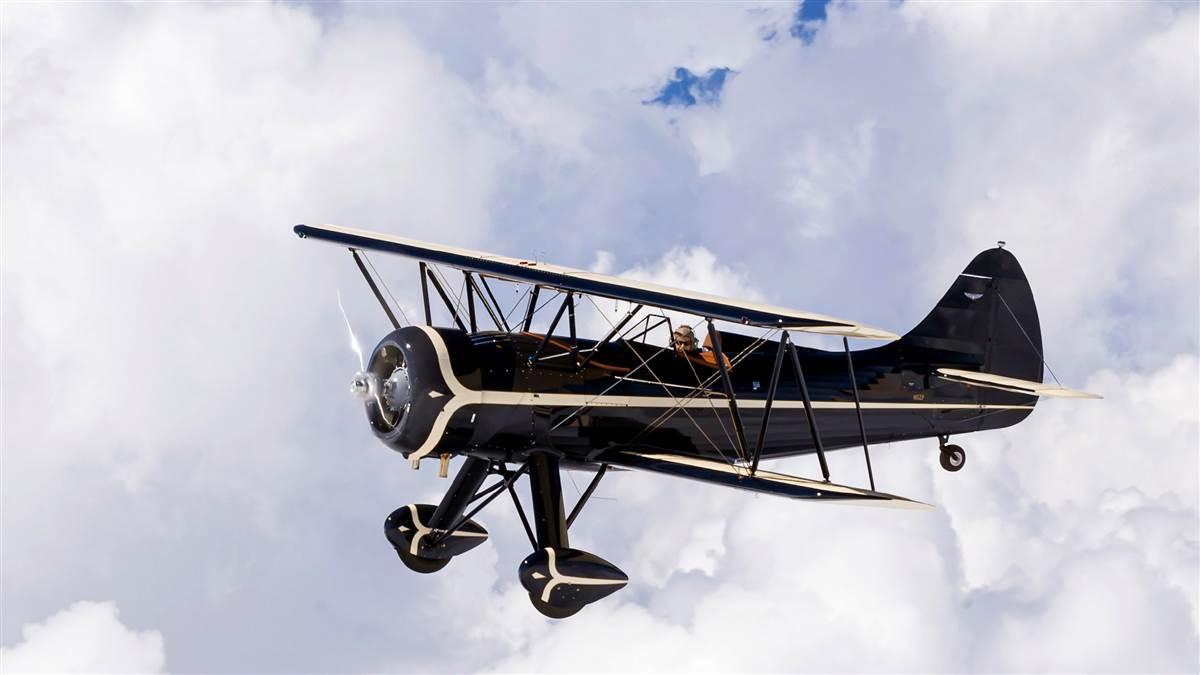Ramp Appeal: Waco UPF–7
Workhorse from a different era

Both were pilot trainers for the “Greatest Generation” of U.S. pilots during World War II, and both have become prized more recently by private owners who restore them to classic condition. Several restorers, most notably Rare Aircraft of Faribault, Minnesota, specialize in transforming Waco UPF–7s into handcrafted showpieces.
AOPA gave away an immaculately restored, candy-apple-red Waco UPF–7 in 2003 as the grand prize in its sweepstakes to mark the 100th anniversary of powered flight.
Waco Aircraft Company of Troy, Ohio, made a variety of biplanes during the 1930s and the UPF–7 was the culmination of its open-cockpit versions. The front cockpit was wide enough for two people sitting side by side, and the pilot in command flew from the rear cockpit.
More than 600 UPF–7s were produced from the late 1930s until 1942, and the vast majority of them were pressed into service for the Civilian Pilot Training Program, a massive buildup in airports and pilot training that started in 1939 before direct U.S. involvement in World War II.
A steel-frame fuselage, wood wings, and fabric covering were typical for airplanes of the era, but the UPF–7 was distinctive because of its roomy cockpit, four ailerons (instead of two), and well-balanced controls. Early UPF models came with a variety of engine options, but the CPTP airplanes came with seven-cylinder, 220-horsepower Continental W670 (R-670) radial engines.
After the war, many of these workhorse airplanes were neglected, discarded, or fell into disuse. They were regarded as economically obsolete because more modern trainers were widely available that were far less costly to operate.
The original Waco Aircraft Company was long out of business in 1986 when Waco Classic began manufacturing a later model, the YMF–5, in Michigan as new, handcrafted show airplanes. Most of them came with 300-horsepower Jacobs engines, leather interiors, and IFR-capable avionics. The company, now located in Battle Creek, Michigan, has continued to update the YMF series. Waco Classic newly manufactured airplanes helped create a market for restored UPF–7s, and both versions have become prized collector’s items.
Restored aircraft have benefited from updated hydraulic brakes, lighter and stronger fabric, and aerodynamic cleanups such as engine cowls. (Military versions had exposed engines to speed up and simplify maintenance.)
The UPF–7 has a well-deserved reputation for excellent handling, but it’s of a different era. Forward visibility is nonexistent in the landing attitude, so pilots must use peripheral vision to gauge whether they’re going straight during takeoff or landing rollout. S-turning while taxiing is essential to clear the path ahead, and ground handling is much easier on grass runways than hard surfaces.



